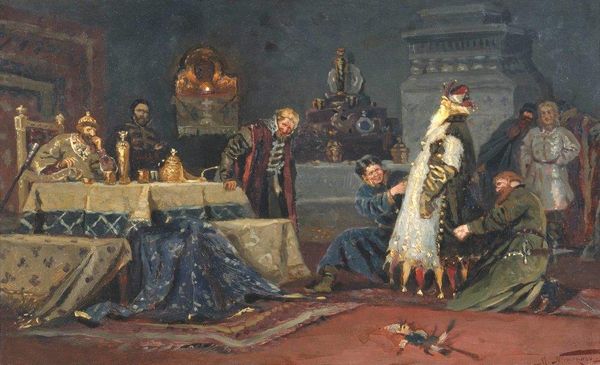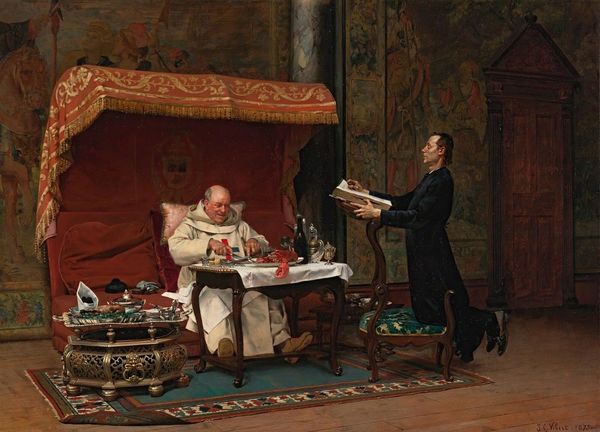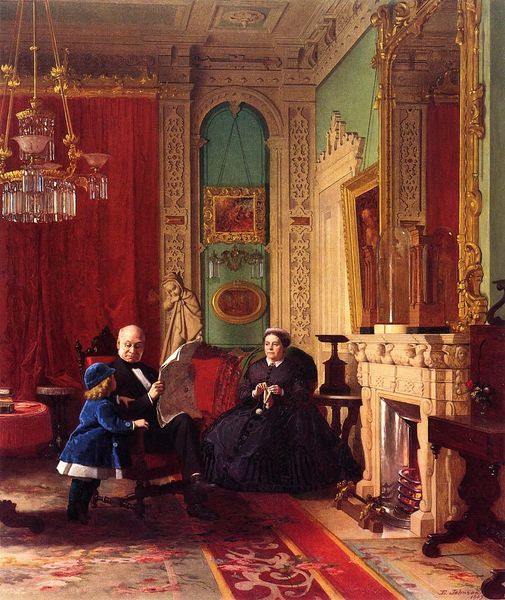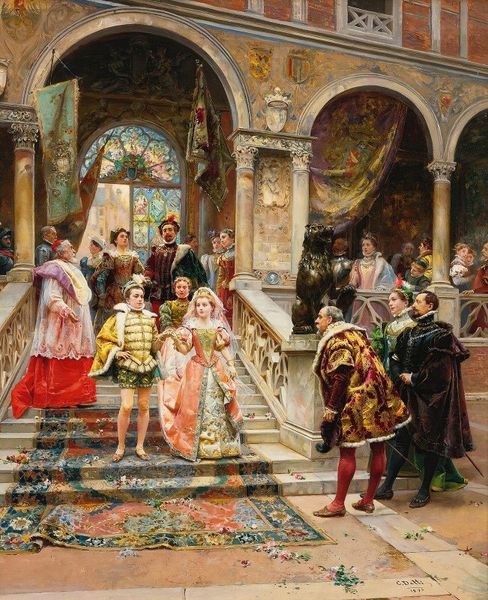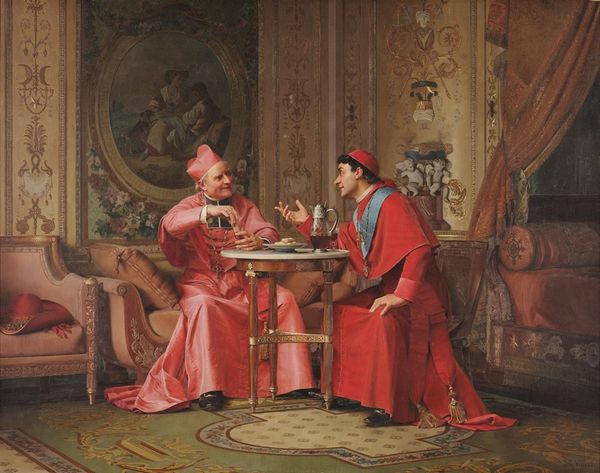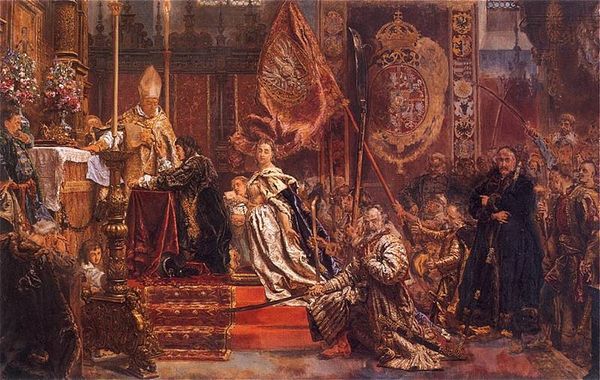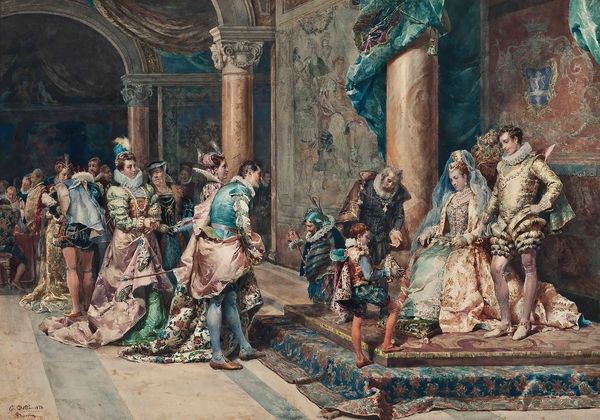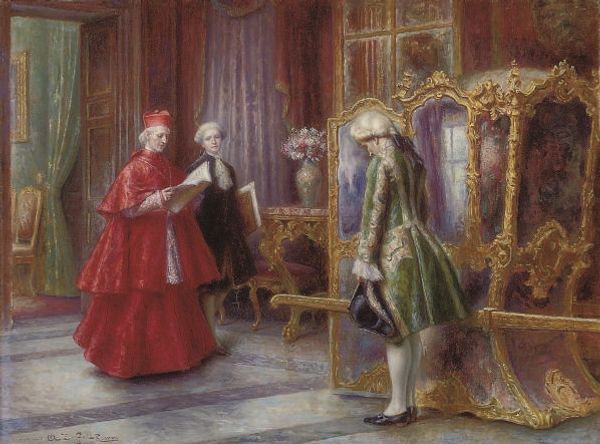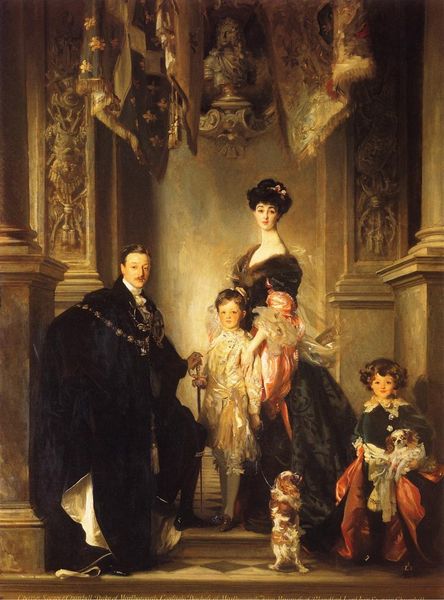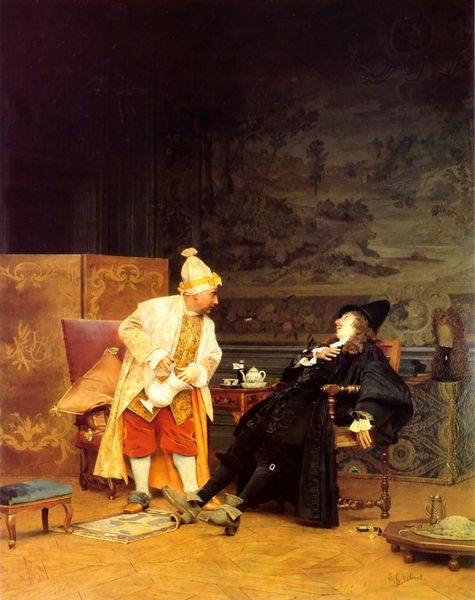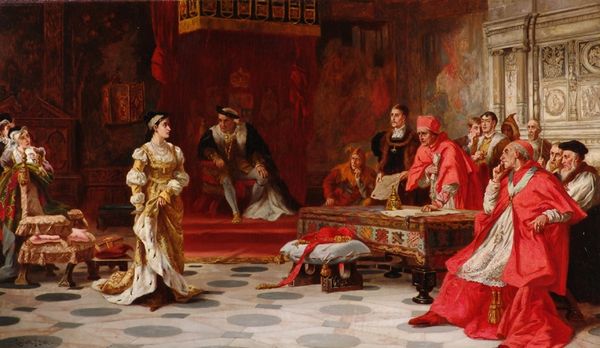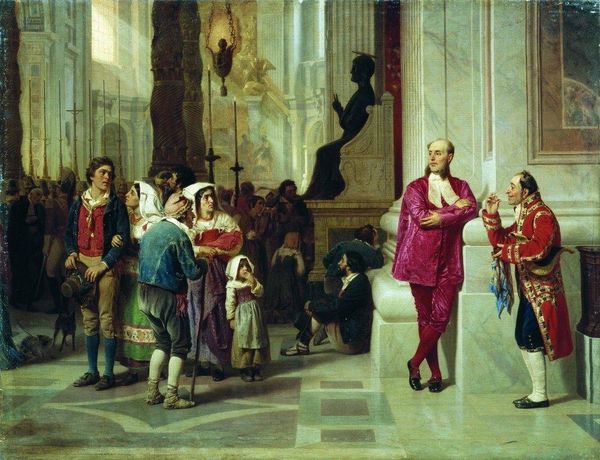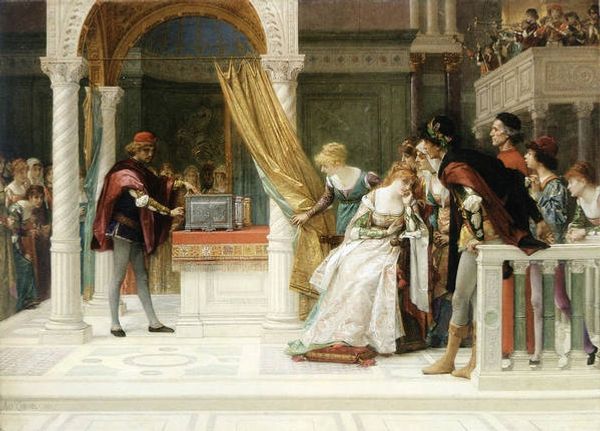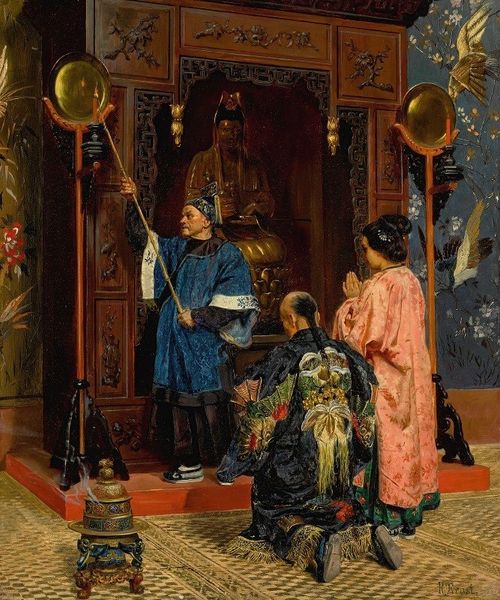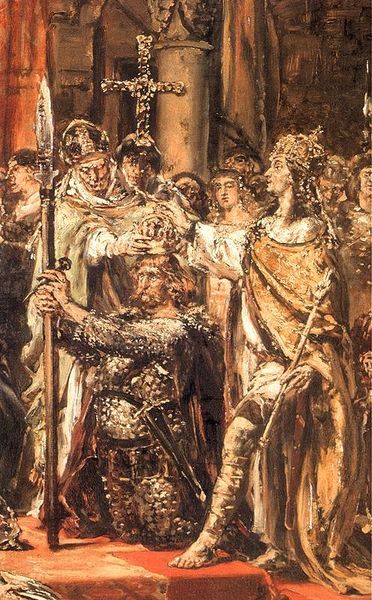
painting, watercolor
#
portrait
#
narrative-art
#
painting
#
watercolor
#
coloured pencil
#
russian-avant-garde
#
genre-painting
#
watercolor
#
realism
Dimensions: 57 x 44 cm
Copyright: Public domain
Curator: Looking at Vladimir Makovsky's watercolor titled "On the Grand Staircase," created in 1919, what strikes you? Editor: It's evocative—the red carpet, the opulence barely contained by the sketchy style. It's a fleeting glimpse into a world on the brink of collapse. There's a definite pre-revolution anxiety in the air, isn’t there? Curator: Undoubtedly. Consider the materials: watercolor and coloured pencil. The lightness and transparency contrast with the subject matter: members of a declining aristocracy. Watercolor as a medium historically afforded ease of transport; an almost provisionality—portable wealth. And yet, the scene screams privilege, consumption, and labor exploitation. Editor: Exactly! The grand staircase itself is such a loaded symbol. Who is ascending, and who is kept below? The younger man’s concerned gaze towards the older figure almost represents a change of guard in Russian politics and identity. The older man swathed in furs, possibly an emblem of comfort at the cost of others. Curator: I'd like to dig deeper into the process. Look closely at the brushstrokes—short, controlled, almost hesitant. This indicates meticulous planning and control despite its casual realism aesthetic. Consider the cost and accessibility of art supplies in 1919 Russia amidst revolution and the new art movements pushing for an end to bourgeoise culture and values. How does this realism function within such a disrupted production framework? Editor: It underscores the desperate clinging to tradition. The choice of realism highlights the real disparities, not idealized versions. Genre-painting focuses attention on that society’s real anxieties—and that gaze communicates something real as well. How are traditional masculine identities are impacted by sociopolitical change? Curator: Fascinating point. By focusing on their material conditions and class anxieties, and highlighting Makovsky’s own context and art production system, we are able to shed new light on Russian identity at the time, far beyond just biographical details. Editor: Absolutely. Situating the artwork at a cross-section of those sociopolitical ruptures emphasizes how we grapple with art history as a continual negotiation between the past and its lasting social consequences. Curator: That really resonates. The convergence of subject and historical context really transforms our understanding of material value here, beyond aesthetic judgement. Editor: Agreed. Thinking about it all collectively brings such clarity, making for richer viewing.
Comments
No comments
Be the first to comment and join the conversation on the ultimate creative platform.
